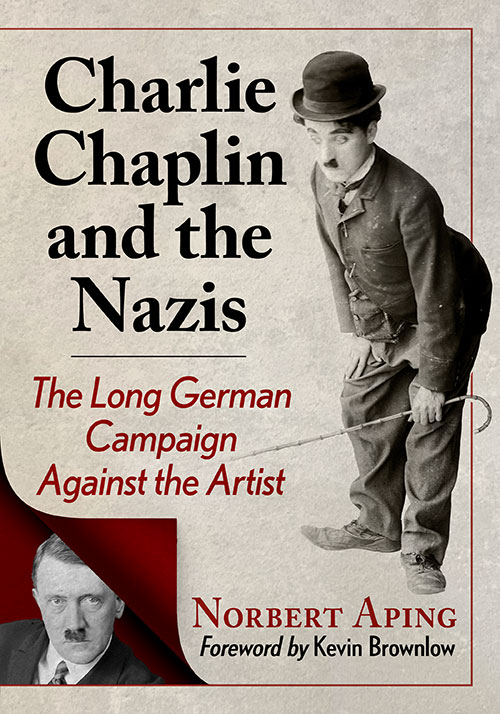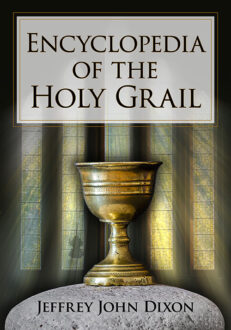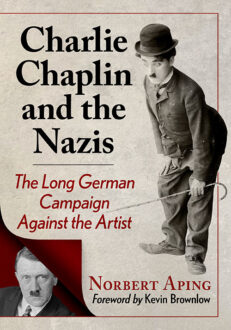Charlie Chaplin and the Nazis
The Long German Campaign Against the Artist
$49.95
In stock
About the Book
Until recently, it was assumed that the Nazis agitated against Chaplin from 1931 to 1933, and then again from 1938, when his plan to make The Great Dictator became public. This book demonstrates that Nazi agitation against Chaplin was in fact a constant from 1926 through the Third Reich. When The Gold Rush was released in the Weimar Republic in 1926, the Nazis began to fight Chaplin, whom they alleged to be Jewish, and attempted to expose him as an intellectual property thief whose fame had faded. In early 1935, the film The Gold Rush was explicitly banned from German theaters.
In 1936, the NSDAP Main Archives opened its own file on Chaplin, and the same year, he became entangled in the machinery of Nazi press control. German diplomats were active on a variety of international levels to create a mood against The Great Dictator. The Nazis’ dehumanizing attacks continued until 1944, when an opportunity to capitalize on the Joan Barry scandal arose. This book paints a complicated picture of how the Nazis battled Chaplin as one of their most reviled foreign artists.
About the Author(s)
Bibliographic Details
Norbert Aping
Foreword by Kevin Brownlow
Format: softcover (7 x 10)
Pages: 483
Bibliographic Info: 148 photos, appendices, notes, bibliography, index
Copyright Date: 2024
pISBN: 978-1-4766-8740-7
eISBN: 978-1-4766-4940-5
Imprint: McFarland
Table of Contents
Acknowledgments ix
Foreword by Kevin Brownlow 1
Preface 6
Introduction 9
1. Charlie Chaplin—a Jew? 15
2. Chaplin Targeted: Shoulder Arms and The Gold Rush, 1921–26 31
3. Who Needs Facts? Divorce, Shoulder Arms and Creativity—1927–31 58
4. Chaplin in Berlin, City Lights—1931 86
5. Nazi Disruptions of City Lights?—1931–32 125
6. Südfilm AG and City Lights, 1931–32 155
7. A Year of Change, 1933 174
8. Modern Times Nazi Style, 1934–36 202
9. “Jew” Chaplin “Steals Intellectual Property,” 1937 231
10. The Run-up to The Great Dictator, 1938–39 251
11. Preparations, 1939–40 275
12. The Great Dictator Takes to the Stage—1940–41 301
13. Bogeymen and The Great Dictator in Germany, 1941–45 321
14. The Gold Rush and Agitation to the Bitter End, 1942–44 343
Appendix 1: The 25-Point Program of the NSDAP, February 24, 1920 365
Appendix 2: Three Articles 368
Appendix 3: NSDAP Main Archive (Hauptarchiv der NSDAP): Chaplin File 374
Appendix 4: Nazi Authors and Other Authors Who Wrote About Chaplin During the Third Reich 376
Appendix 5: Nazi Chaplin Slurs 377
Appendix 6: Reichsfilmarchiv Catalogue Card No. 15,242: The Great Dictator 380
Appendix 7: Signage in the Ghetto of The Great Dictator 382
Chapter Notes 385
Bibliography 437
Index 451
Book Reviews & Awards
• A Library Journal Starred Review
• “Aping’s research in German and U.S. archives, German censorship records, Chaplin’s FBI files, and the secondary literature on the Little Tramp character are exemplary and exhaustive, as is his discussion of cinema culture in the Germany of the 1920s and 1930s. … An incredibly detailed and successful book about Charlie Chaplin that does not lose film fans.”—Library Journal
• “An unusually important book”—Kevin Brownlow, film historian, author of The Parade’s Gone By, The Search for Charlie Chaplin as well as co-creator of the documentaries Unknown Chaplin and The Tramp and the Dictator
• “Extremely well-researched and a perceptive interpretation of the complex series of events and agendas”—Glenn Mitchell, journalist, film historian, author of The Chaplin Encyclopedia
• “Amazingly comprehensive research which has unearthed fascinating material”—Dan Kamin, mime expert and one-man show performer, author of The Comedy of Charlie Chaplin: Artistry in Motion
• “A masterpiece”—Lisa Stein Haven, professor of English, Ohio University, author of Charlie Chaplin: A Comedian Sees the World and Charlie Chaplin’s Little Tramp in America, 1947-1977





